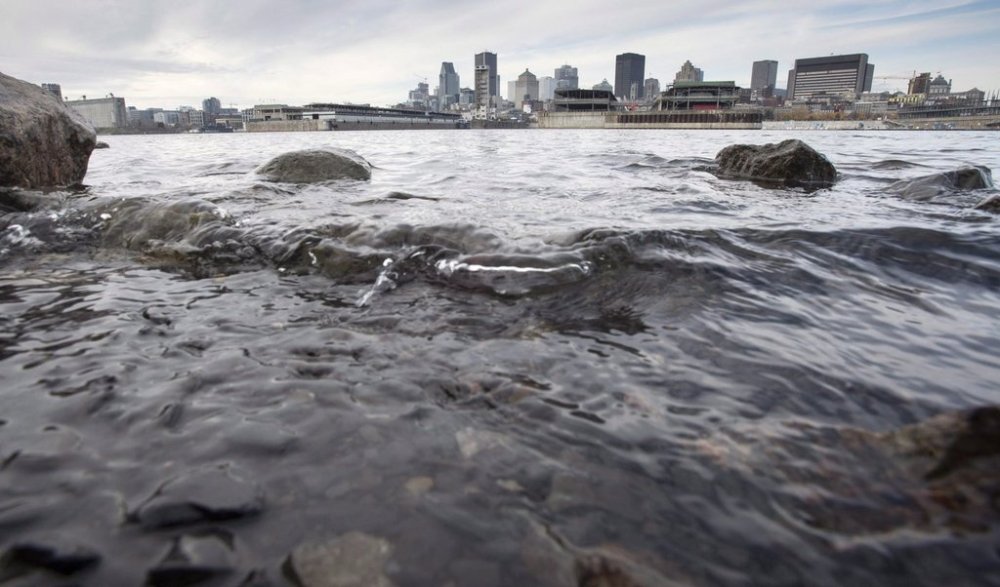Low water levels in Quebec rivers spur navigation warnings, watering bans
Advertisement
Read this article for free:
or
Already have an account? Log in here »
To continue reading, please subscribe:
Monthly Digital Subscription
$1 per week for 24 weeks*
- Enjoy unlimited reading on winnipegfreepress.com
- Read the E-Edition, our digital replica newspaper
- Access News Break, our award-winning app
- Play interactive puzzles
*Billed as $4.00 plus GST every four weeks. After 24 weeks, price increases to the regular rate of $19.00 plus GST every four weeks. Offer available to new and qualified returning subscribers only. Cancel any time.
Monthly Digital Subscription
$4.75/week*
- Enjoy unlimited reading on winnipegfreepress.com
- Read the E-Edition, our digital replica newspaper
- Access News Break, our award-winning app
- Play interactive puzzles
*Billed as $19 plus GST every four weeks. Cancel any time.
To continue reading, please subscribe:
Add Free Press access to your Brandon Sun subscription for only an additional
$1 for the first 4 weeks*
*Your next subscription payment will increase by $1.00 and you will be charged $16.99 plus GST for four weeks. After four weeks, your payment will increase to $23.99 plus GST every four weeks.
Read unlimited articles for free today:
or
Already have an account? Log in here »
MONTREAL – The lack of rain in recent weeks is contributing to low water levels in parts of the St. Lawrence River in Quebec, prompting officials to ask boat pilots to be wary of potential navigation hazards.
Kevin Lajoie, spokesman for the company that manages the St. Lawrence Seaway, says the corporation has restricted speeds in response to lower water levels on Lake St. Louis, adding that it will “implement additional mitigation measures if deemed necessary.”
Environment Canada spokesperson Hannah Boonstra says the hot dry weather in Quebec and Ontario is to blame for the drop in water levels in the St. Lawrence. Temperatures exceeded 33 C in Montreal on Sunday and Monday, and the high Tuesday reached 34.6 C, which is the highest for the date since record-keeping began in 1871.

“Southern Ontario and southern Quebec have experienced persistent dry hot weather in July and early August …. As a result, local inflows to the lower St. Lawrence River are diminished,” Boonstra said.
Environment Canada meteorologist Frederick Boulay said the 20 millimetres of rain that fell on Montreal on Wednesday by 4 p.m. was the first significant precipitation the city received since July 17. The only other rainfall since that time was a single millimetre on July 30, he said.
Commercial vessels transiting between Quebec and Montreal may also have to reduce their load to ensure enough clearance, Fisheries and Oceans Canada wrote Tuesday.
Francis Fortin-Legault of Canadian Hydrographic Service says ship pilots should be subtracting about 10 centimetres from the available depth of water in the St. Lawrence River compared to what’s indicated on maps of the waterway.
He said that’s because water levels between Montreal and Sorel-Tracy to the east have fallen below the chart datum, which is a reference level used to create charts. He said low water levels happen periodically, but said it’s “not common” to see it happen in August.
“The pilots need to be really careful,” he said.
Fortin-Legault says current water levels are reduced because of the operations of dams, but also because of a lack of rain in recent weeks, which impacts the smaller rivers that feed into the St. Lawrence.
The Canadian Coast Guard issued a notice on Aug. 6, warning that buoys between Montreal and Trois-Rivières may be off position and unreliable due to levels that have fallen below the norms.
On Tuesday, the Coast Guard reported that a 180-metre bulk carrier had run aground in the St. Lawrence River near Montreal. A spokesperson said the grounding occurred because of an engine failure and not water levels, although low levels could potentially impact a refloating plan.
Montreal officials have also imposed restrictions on lawn watering and other water use in some boroughs west of downtown because of low levels in the Rivière des Prairies caused by “extreme heat and dry conditions.”
The ban includes using sprinklers or automatic watering systems, watering lawns, washing cars, and filling existing swimming pools.
The city said the low levels create poor water quality and increase strain on water-treatment infrastructure, though it says drinking-water quality hasn’t been affected.
This report by The Canadian Press was first published Aug. 13, 2025.

